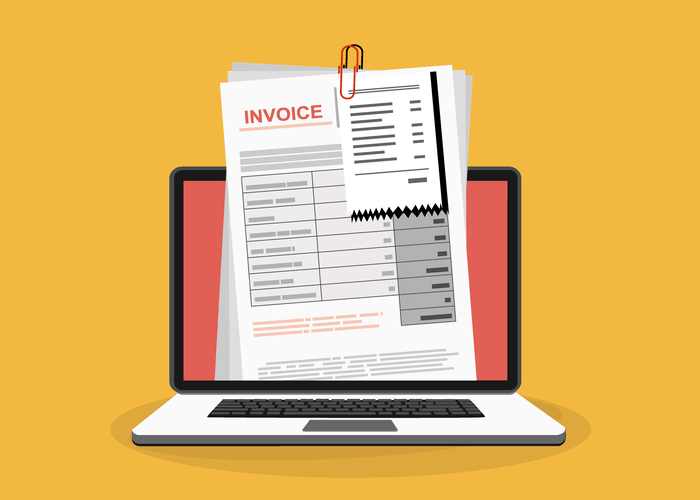
If you want to review debits and credits, see the lesson on debits and credits. And for a review of the most common journal entries, see the lesson on basic accounting journal entries. Below is the T-account for Cash for the transactions and events of Xao Corporation. T-accounts can be a useful resource for bookkeeping and accounting t accounts novices, helping them understand debits, credits, and double-entry accounting principles. Unfortunately, any accounting entries that are completed manually run a much greater risk of inaccuracy. If you add up the totals of the debits and credits in all four T-accounts, you will see that they balance.
Everything to Run Your Business
The account balances are calculated by adding the debit and credit columns together. This sum is typically displayed at the bottom of the corresponding side of the account. The following T-account examples provide an outline of the most common T-accounts. It is impossible to provide a complete set of examples that address every variation in every situation since there are hundreds of such T-accounts. The visual presentation of journal entries, which are recorded in the general ledger account, is known as the T-Account. It is called the T-account because bookkeeping entries are shown in a way that resembles the shape of the alphabet T.
- If the labor costs are still debited and credited fully, then this type of mistake can also be difficult to catch.
- After assessing what debit and credit entry applies to each specific account, T accounts can be created.
- The major components of the balance sheet—assets, liabilities and shareholders’ equity (SE)—can be reflected in a T-account after any financial transaction occurs.
- In double-entry bookkeeping, every transaction affects two accounts at the same time (hence the word double).
- Debits here make sense because they represent adding value, like buying new equipment (debit) which increases the total value of your assets.
Subsidiary Ledgers (or Sub Ledgers): Debtors Ledger and Creditors Ledger
A double entry system is a detailed bookkeeping process where every entry has an additional corresponding entry to a different account. Consider the word “double” in “double entry” standing for “debit” and “credit”. The two totals for each must balance, otherwise there is an error in the recording. Debits are always posted on the left side of the t account while credits are always posted on the right side.
Understanding Debits and Credits in T Accounts
- Now these ledgers can be used to create an unadjusted trial balance in the next step of the accounting cycle.
- For different account types, a debit and a credit may increase or decrease the account value.
- Without detailed records, it’s challenging to accurately assess the financial health of an organization or comply with regulatory requirements.
- A T-account is used in bookkeeping, which involves keeping track of the financial transactions that occur within a business.
- Once journal entries are made in the general journal or subsidiary journals, they must be posted and transferred to the T-accounts or ledger accounts.
- The standard T-account structure starts with the heading including the account name.
- To reduce the Cash account, the account must be credited since it is an asset account.
According to the Collins English Dictionary, the ledger is “the principal book in which the commercial transactions of a company are recorded.” If you’ve been studying accounting for even a short amount of time then you’ve probably heard of T-accounts and ledgers. In this lesson we’re going to learn exactly what these are, we’ll look at a detailed example of how to put a T account together, and we’ll learn why they’re so important. After a few days of receiving the invoice for the rent, i.e., on April 7th, 2019, Mr. X makes the same payment. Let us understand the format of a T account ledger and how it is designed in a way where it gives the individual reviewing it an ease of locating entries.
When teaching accounting or bookkeeping
The standard T-account structure starts with the heading including the account name. The left column is always the debit column while the right column is always the credit column. Think of it as a financial X-ray, giving loan officers a glimpse into the inner workings of a business. This inefficiency can impede timely financial reporting and decision-making, hindering the organization’s ability to respond swiftly to market changes or internal developments. T-accounts can become unwieldy and inefficient in large-scale operations, such as those of multinational corporations or conglomerates. Managing a multitude of T-accounts for various subsidiaries, departments, and business segments can lead to confusion and errors.

Ask Any Financial Question
- The articles and research support materials available on this site are educational and are not intended to be investment or tax advice.
- Yes, similar to journal entries, T accounts should also always balance.
- Let us understand the format of a T account ledger and how it is designed in a way where it gives the individual reviewing it an ease of locating entries.
- Next we are going to build off what we have just learned and look at the normal balances of accounts in accounting.
- In double-entry bookkeeping, a widespread accounting method, all financial transactions are considered to affect at least two of a company’s accounts.
- T Accounts allows businesses that use double entry to distinguish easily between those debits and credits.
You’re a budding entrepreneur who just launched your dog walking service. You can use a T-account for “Pet Sitting Fees” to record your income from each walk. This helps you understand your revenue stream and make informed decisions about your business. Entrepreneurs and small business owners don’t always have a dedicated accounting team. These tools offer a clear and concise way to track their finances without getting bogged down in complex spreadsheets.


Without a historical perspective, businesses may struggle to identify emerging trends, assess long-term performance, or comply with audit requirements effectively. T-accounts cannot perform sophisticated financial analysis techniques, such as ratio analysis, variance analysis, or scenario modeling. Without such analytical tools, recording transactions businesses may struggle to effectively assess profitability, liquidity, and solvency.

Accountants and Bookkeepers
Now, the left side of the T is for debits, and the right side is for credits. https://www.bookstime.com/ It’s a visual way to see how transactions affect different accounts. The second transaction will credit the accounts payable T account for $50 and debit the supplies account for $50. On account is saying that the supplies will be paid for later and that is why we increase accounts payable with a liability.

Salvage Value – A Complete Guide for Businesses
For example, if you examine the T-account above, you can see that all increases to the bank account (receipts) occur on the left side. All the decreases to the bank account (payments) occur on the right side. Once done, check your answers against the solution further below. Whenever cash is paid out, the Cash account is credited (and another account is debited). T-accounts are typically used by bookkeepers and accountants when trying to determine the proper journal entries to make. That’s because we increased our rent expense for the amount of the rent.